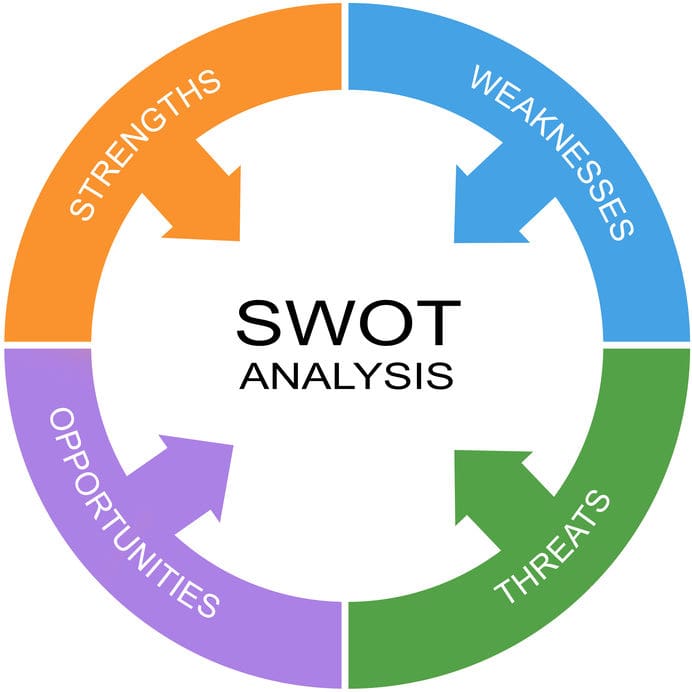Strengths, Weaknesses, Opportunities, Threats
1. Select an individual to facilitate the SWOT analysis.
2. Brainstorm strengths
- Solicit ideas from participants. Capture as many as possible
- Record all suggestions on a flip chart. Avoid duplicate entries.
- At this point, the goal is to capture as many ideas on the flip charts as possible.
3. Consolidate ideas
Post all flip charts pages on a wall. While every effort may have been taken to avoid duplicate entries, there will be some ideas that overlap. Consolidate duplicate points by asking the group which items can be combined under the same subject. Resist the temptation to over-consolidate—lumping lots of ideas under one subject. Often, this results in a lack of focus.
4. Clarify ideas
- Go down the consolidated list item by item and clarify any items that participants have questions about.
- It’s helpful to reiterate the meaning of each item before discussing it. Stick to defining strengths. Restrain the team from talking about solutions at this point in the process.
5. Identify the top three strengths
- Sometimes the top three strengths are obvious and no vote is necessary. Otherwise, give participants a few minutes to pick their top issues individually. Allow each team member to cast three to five votes (three if the list of issues is ten items or fewer, five if it is long).
- Identify the top three items. If there are ties or the first vote is inconclusive, discuss the highly rated items from the first vote and vote again.
6. Summarize strengths
Once the top three strengths are decided, summarize them on a single flip chart page.
7. Repeat Steps 2-6 for weaknesses, opportunities, threats (challenges)


